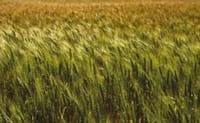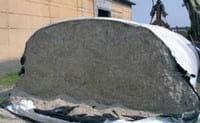Feed preservation
KOFA – Preserves virtually anything!
Published: June 28, 2011
By: Birgit Rogge, Klaus Slavicek (Addcon)
1. KOFA® GRAIN – pH 5 –
Preservation of kernel corn
The preservation method used for kernel corn is identical with the one used for other grains. Kernel corn should be harvested at the end of the ripening period, when you can easily place slits into the kernel with a finger nail. If the kernels should dry out too much, the skin surrounding the kernel will create problems with the application of the preservative. In conjunction with the preservation process, this skin absorbs the applied substance like a porous piece of paper, so that adequate protection for the corn is no longer guaranteed during the storage period. The consequence may be post harvest heat development and the growth of mold. The amount of preservative to be used is also contingent on the purity of the corn. Depending on the intended storage period, the minimum amount of Kofa Grain – pH 5 – to be used based on a corn moisture level of 40-45% is up to 20 liters per ton of clean kernels. Make sure you add more just to be safe! The milling process at CCM mills alone and the resulting surface enlargement of the corn kernels call for an increase of the dose by 20 %. Given that the active ingredient - sodium benzoate does not evaporate, most of it remains in place for the duration of storage. This means that even if the moisture level in the grain is high, which is typical for kernel corn, safe preservation is possible for up to a year.
Feed benefits
Thanks to the combination of sodium benzoate and propanoic acid, Kofa Grain –pH 5- is not only highly effective in the combating of yeasts and mold when used as a preservative in grains and kernel corn; it also generates positive side effects for the feeding of life stock, such as cattle and pigs. In the digestive tract of pigs, for instance, regular feeding of Kofa Grain –pH 5- treated grains results in the development of a bacteria barrier as a defense against disease causing bacteria (E. Coli, salmonella, etc.). Evidence has shown that this does reduce the amount of bacteria in the animal’s urine. The results of minimizing the presence of these pathogens are fewer MMA problems (mastitismetritis- agalaxy), such as urinary tract infections, fertility problems and reduced piglet growth. The reduction of the pH-value of the urine also lowers the NH3-emissions in the stable and therefore reduces the risk of pulmonary tract infections. In piglets, this produces an increased life mass gain of 2 to 6 kg and for female pigs in a boost in piglet raising rates of 0.9 piglets per year.
The benzoic acid in Kofa Grain - pH 5- also has an anti-bacterial effect in cattle. Given that it does not destroy the lacto flora in the digestive tract, the lactobacilli can adhere to the walls of the colon more effectively, which reduces the occurrence of diarrhea.
2. KOFA NP
Preservation of ancillary products
The ancillary products generated by the food industry frequently provide valuable animal feed products. If stored improperly or if they are not adequately preserved, the exposure to air can spoil them due to mold and yeast growth. Kofa NP was developed specifically for the preservation of draff, grain sump, pulps and slices of sugar beets; and it is used for total coverage or slice coverage treatment. Thanks to the improved homogeneous blending of Kofa NP, full treatment is preferably applied in food plants. Surface treatments can be used in agricultural operations without any problems whatsoever. An important factor to consider ensuring that the amount used is dosed precisely is to distinguish by the type of storage. For interim storage, which results in the exposure of the product to air, and depending of the length of the anticipated storage period, more preservative will be required than if the product is stored under vacuum (mobile silo or foil bag). One of the requirements for the efficacy of Kofa NP is the homogenous distribution of the product using a high performance dosage technique. For whole product treatment, interim treatment and storage in mobile silos or on the silo plate, the substance should be applied at the ancillary product manufacturer’s end already. For sump and sugar beet scrap, the direct application during the bag silo process is optional. For more detailed recommendations, please consult a dosage table.
 |  |  |
Related topics:
Authors:
ADDCON
Recommend
Comment
Share

Would you like to discuss another topic? Create a new post to engage with experts in the community.






